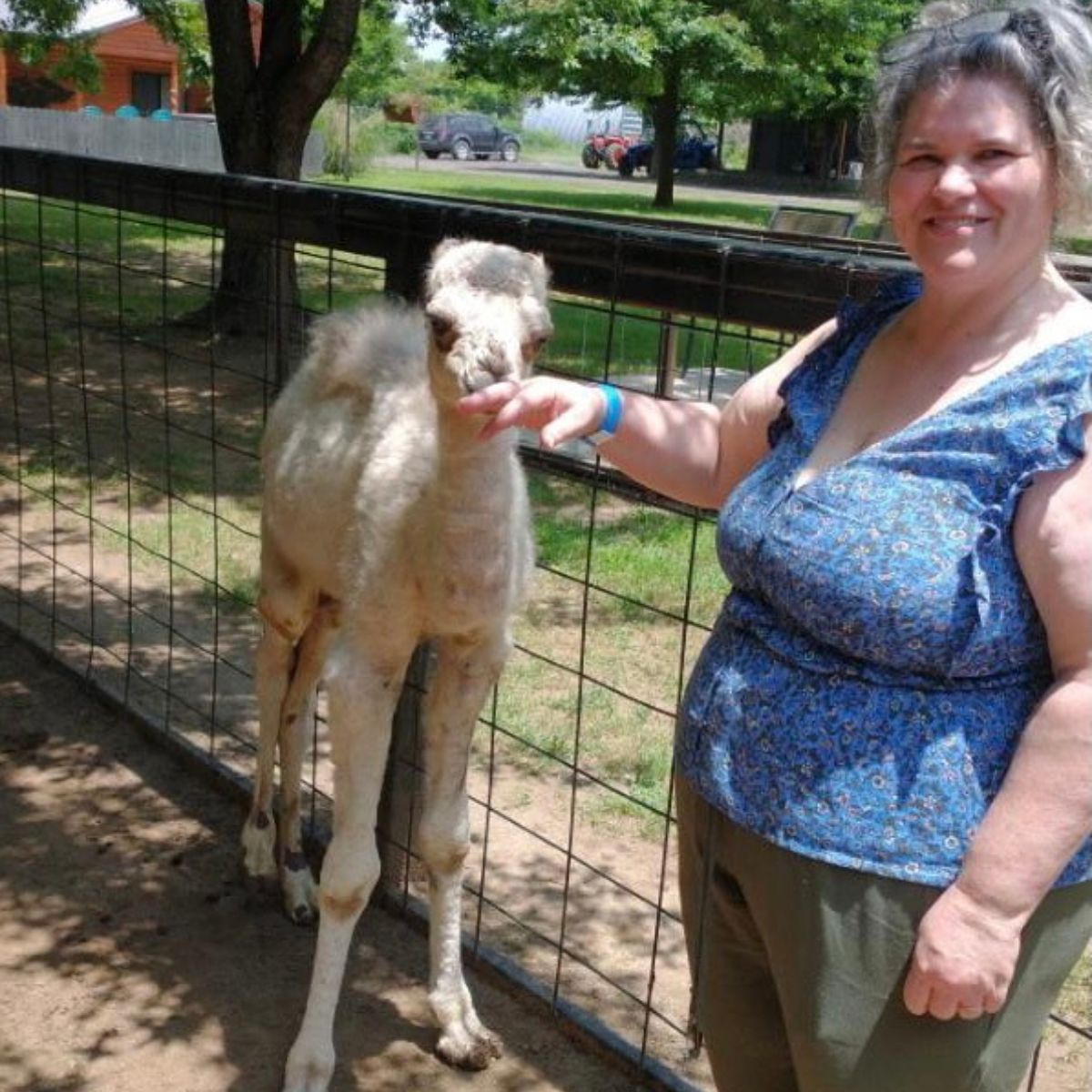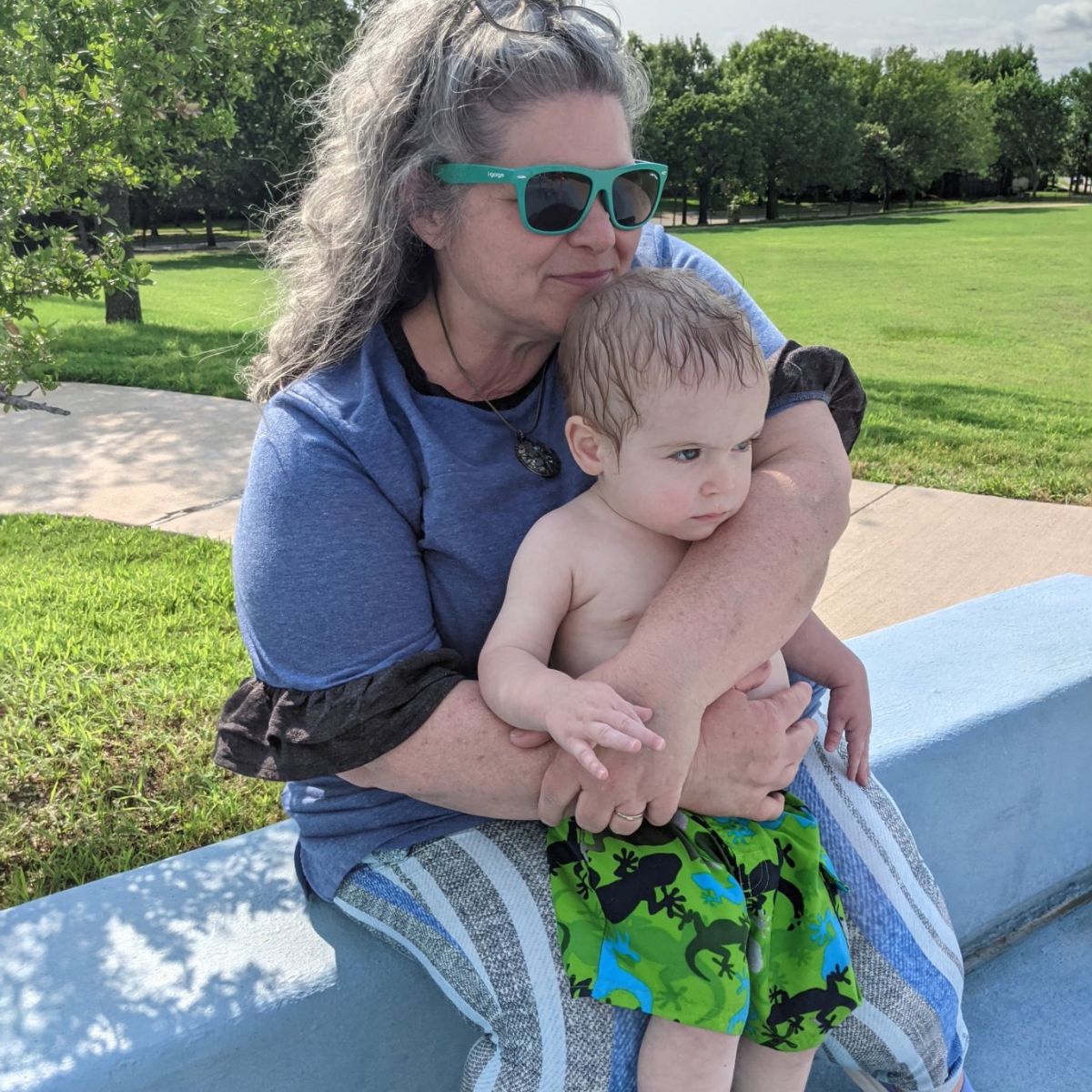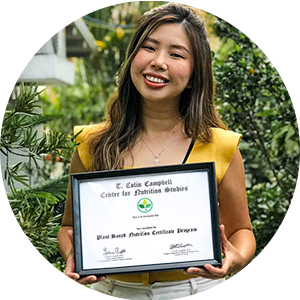
I have traveled a long and bumpy food road: though I admire and envy those who are able to watch a documentary like Forks Over Knives or pick up The China Study and immediately jump on board with a whole food, plant-based (WFPB) lifestyle, that was not me.
I was raised on the standard American diet. Cold, congealed liver and onions next to shriveled peas. I remember trying to wait out my mom to see if I could avoid eating them. I was a “pleasingly plump” little girl (I think that was even a clothing brand that my mom bought for me); whenever I discovered a frozen stash of Easter candy, Zingers, or chocolate cookies, I made short work of those.
My mom was concerned about my “appetite,” and at about 8 years old, I was given my first diet. She bought these little caramel candies called Aids (renamed Ayds after the virus hit the scene). You chewed one and drank hot water, and this was supposed to help you fill up before meals. I loved Aids—they were, indeed, candy—so much that I’d sneak them. Fail number one.
In high school, my mom gave me diet charts with prizes. I’d lose a bit of weight, but it wouldn’t last. I worked in a drugstore and I had a candy addiction. I remember having a sleepover with girlfriends and being baffled that they hardly ate the candy I gleefully brought; however, I was also grateful because I had so much leftover.
Years later, when I got engaged, I decided I wanted to wear my mom’s wedding dress. So I reluctantly signed up for Nutri-System, where my grandpa was the overseeing physician. I remember the shame I felt when the “counselor” suggested I was embarrassing my grandpa with my lack of progress and that the expense of the food was wasted if I was going to cheat all the time. Yeah, I didn’t wear my mom’s dress. Big fail number two.
Fast forward to my young mom years when I grew more plump than pleasing. Those times consisted of Richard Simmons videos, early morning YMCA aerobics, Weight Watchers, cottage cheese and carrots, celery, low-fat cookies, and Weight Watchers frozen desserts. I even paid for hypnosis to lose weight. After repeated failures, I eventually gave up and decided that I would eat what I wanted when I wanted. I managed to stay in the mid-200s for a very long time.

When my daughters were teens we watched Super Size Me. This opened my eyes to the reality that what we ate could make a difference. A few years later, we watched Fat, Sick, and Nearly Dead. I was intrigued, but not so much that I kept digging. But then, about 12 years ago, my daughter, who lived at home with my husband and me, did the Daniel Fast and went vegan right after. My husband had just recently been diagnosed with rheumatoid arthritis, and we knew that vegan food was supposed to be good for us, so we followed in my daughter’s footsteps.
At first, I lost about 20 pounds and my husband started feeling better. We watched all the documentaries, including Forks Over Knives. My daughter and I even traveled to Portland for VegFest where we saw Dr. Esselstyn speak. I remember thinking how restrictive he was, but a seed was planted and I thought deep in my mind that I was aging and overweight and that someday it could come back to haunt me.
For a dozen years, I kept falling off the vegan wagon and crawling back on. I was “good” until something tempted me too far, then my unhealthy mindset kicked in and I would become vegetarian all the time, vegan sometimes. I didn’t eat meat, but dairy, cheese, and sweets—especially sweets—were my siren song. I even blogged vegan recipes, most of which were not so great for me, but I was addicted to recreating all the delicious food memories I had. Yo-yoing was taking a toll emotionally, and I was feeling lots of guilt, so then I’d try to find my resolve again, but I was failing as fast as I picked myself up and then staying down far longer than before.
Even though I work in internal medicine and vascular surgery, where I see firsthand all of the diseases that come with the standard American diet, I was resistant to going to the doctor myself. In my mid-20s, I stopped going to doctors after an ENT said my obesity was the cause of an ear infection. Really? It seemed as though everyone wanted to suggest that my obesity was the cause of anything and everything. I fumed.
But when I started having grandkids, that seed from Dr. Esselstyn’s talk began to haunt my brain, and I made a promise to go to a doctor to get everything checked out before I turned 60. I made an appointment with a primary care doctor for my 59th birthday in October 2021. I began eating WFPB “oil light” three weeks before that appointment. Mammograms (my first) and cologuards were scheduled, and I had my blood drawn.
I left the appointment with a diagnosis of high blood pressure and slightly elevated blood sugar. I also had an awareness that the other tests were looming. The morning of my mammogram came. There was a quick visit to the ultrasound suite followed by a biopsy three days later to check out a suspicious lymph node and a concerning mass. The diagnosis? Breast Cancer.
With surgery and radiation, it was a basic and treatable outcome. In that way, I dodged a bullet. But I was very aware that this mass, though small, had been growing in my body for years. Overnight, I finally embraced what I’d known for years: hormones love to hang out in extra fat, and I have been carrying lots of extra fat around my internal organs. My breast cancer was female hormone-positive, which means the hormones feed my cancer. I am on a five-year prescription that suppresses those female hormones to starve any cancer cells still hanging out after radiation and surgery, but I am defeating the purpose if I still have 115 extra pounds of fat-containing those very same cancer-feeding hormones. The fat has to go.
Looking for continued growth, support, and knowledge, I have been reading books like The China Study (finally) and rewatching documentaries and YouTube videos from doctors and WFPB community members. I also found Chef Del Sroufe’s Diet Daze group via Facebook, which recently moved to a new home, CNS Kitchen. The support and encouragement from the members of that group have come at a pivotal point in my journey. This community has underscored that I’m on the right track to health and that living this way is doable and attainable. With my initial efforts and participating in a recent wellness challenge through CNS Kitchen, I have successfully lost a total of 44 pounds of the 115 I needed to lose since my first visit to the doctor in October.

Has it been challenging? Not going to lie—yes, sometimes. But my mindset is different now. I am literally eating to save my life. The cancer I had isn’t permanently gone at all, from my perspective. It was slow-growing and it grew for about 10 years; it reached a lymph node. The lymphatic system is interconnected with the entire body, so those cancer cells are throughout my body too.
I am adding and deleting many items to and from my life. For starters, green tea, ground flaxseed, and whole soy products like tempeh, are cancer fighters. These are on my must eat/drink list. I know that making my own food from whole plants will give me life and energy. Greens are gold! Beans and whole grains fuel my good gut colony and help me feel full. I am also adding fasting to my journey. A promising study showed that fasting for a minimum of 13 hours a day improves breast cancer survival outcomes. This simply means I stop eating after 6:00 pm and delay breakfast until no earlier than 7 or 8 am. Or, my fast might start after lunch and go until breakfast the next morning.
I know perfection in this world is nearly impossible. I’m removing fail from my vocabulary. I’m planning ahead and picking the best options at the moment. If I am away from my clean environment and food comes up, I will make the best choice available. This might be eating a side salad with dressing on the side or no dressing at all, or steamed vegetables. I may have a bite or two of something vegan but not WFPB, but only bites—not gorging. I may even drink a glass of water or a cup of tea and enjoy the conversation without putting one bite of food into my mouth.
Being hungry is not the worst thing. I believe it’s a sign that my body is utilizing fuel that wouldn’t otherwise serve me by being stored in my abdominal cavity, crowding my vital organs. I may celebrate a birthday or holiday and eat a bite or a slice of something that’s not on my perfect list, but the difference is that the next opportunity to eat is going to be a good healthy choice for me. Those little moments of off-plan are true moments; they are not going to move my goal and my focus or slow me down from my desire to thrive.
I am always going to be moving forward to the next best choice and put imperfections behind me. Because every decision I make is cumulative. C.S. Lewis has a quote about our choices either making us more hellish creatures or heavenly creatures. I’d like to stretch that a bit and say that what I choose to put into my body or allow into my life is either going to lead me, one choice at a time, to more of the “going to live to 95+ being a salty, sassy, fun grandma” future I want, or the “decaying in the nursing home 80-year old” that I see every day in the medical practices where I work. This mindset and way of eating is an absolute win.
Copyright 2024 Center for Nutrition Studies. All rights reserved.
